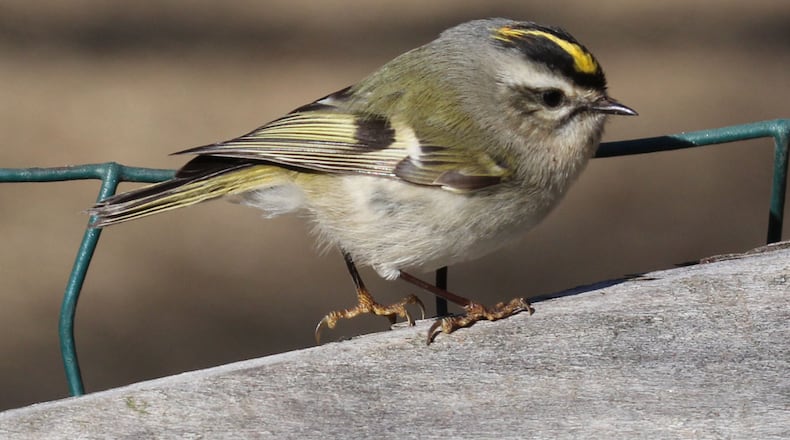From my kitchen window in Decatur the other morning, I watched with delight as a tiny, energetic little songbird flitted among the boughs of a holly tree, occasionally hovering to peck something from the evergreen leaves and twigs.
From its minuscule size, I knew at once that it was one of two kinglet species — ruby-crowned and golden-crowned — that inhabit Georgia during winter. A closer look revealed a lemon-yellow crest atop the cute little bird’s head, identifying it as a female golden-crowned kinglet. (The male has an orange crown patch.)
The golden-crowned kinglet is only a tad larger than Georgia’s tiniest bird, the ruby-throated hummingbird. In winter, however, the hummingbird is absent from the state, which leaves the golden-crowned kinglet as the state’s smallest bird during the cold season.
It’s only slightly smaller, though, than its close cousin, the ruby-crowned kinglet, so named because of the male’s ruby crown that he flashes during courtship. Both species nest up north as far as Canada during spring and summer but migrate to Georgia and elsewhere in the South for the winter.
Kinglets are epitomes of nervous energy. Much of the time, it’s hard to get a good look at them because they’re in perpetual motion searching for food. But they’re also curious and sometimes will come up close to check out a human observer. While in Georgia, kinglets tend to stay near each other, often in the company of Carolina chickadees, titmice and other small birds.
Even in the dead of winter, kinglets amazingly find enough small insects, spiders and occasional berries and seeds for nourishment. They constantly hover and flick their wings over small branches and twigs to flush out their tiny prey. They sometimes visit suet feeders. And despite their diminutive sizes, they are hardy little creatures that can survive harsh winter nights.
IN THE SKY: From David Dundee, Tellus Science Museum astronomer: Winter officially begins with the solstice at 4:48 p.m. on Wednesday, which will be the shortest day of the year. The Ursid meteor shower peaks on Thursday night with about 15 meteors per hour in the eastern sky. The moon will be new on Friday (Dec. 23). Mercury and Venus are very low in the west just before sunset. Mars is high in the east at dark and is at its brightest. Saturn is very low and Jupiter is high in the southwest at dark.
Charles Seabrook can be reached at charles.seabrook@yahoo.com.
About the Author
Keep Reading
The Latest
Featured


